Did you know that there are seven main breeds of donkeys in Spain? But what is more alarming is that they are facing serious issues regarding their population and that it is driving them to the edge of extinction. Donkeys, which used to have significant roles in the ancient ages, got their charms decreased with the rapid developments and technological advancements that the world embraced. The beasts of burden were prized possessions of the past. But now they are unnoticed and might even get extinct without anyone knowing. In this article, you can learn about donkeys in Spain, which are the most endangered and under threat of extinction.
1. Catalan Donkey
The Catalan donkey gets its name from the historic region it hails from, Catalonia. Though this region now lies separated between north-eastern Spain and south-western France, the donkeys got to keep their names. They are large domestic donkeys weighing about 350- 450 kgs (771.6 – 992.08 lbs). Their lineage dates back several hundred years back; making it a very old species of donkey in Spain. They are also in danger of extinction due to these reasons. In the past, they were mostly used for breeding, especially as a sire for mules. Their huge physique and features are the factors that drove the breeders into choosing them for the purpose.
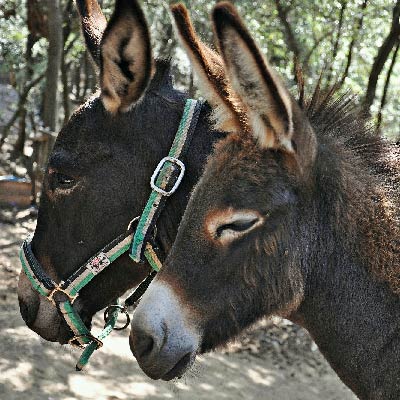
They have a significant role in the generation of several breeds of donkeys. As is their influence in the formation of the American Mammoth donkey. They are also known for their long lifespan as well as their sexual prowess, both significant factors, again making them the best choice for breeding.
2. Andalusian Donkey
Andalusian donkey is also a very old breed of donkey, whose history can be traced to the eras of kings and wars. They were the most prized possessions of the 18th century, with the then-king not even allowing them to go out of the country. These donkeys could probably be the descendants of the long-extinct Pharaoh donkeys of Egypt, which were brought to Spain about 3000 years back.
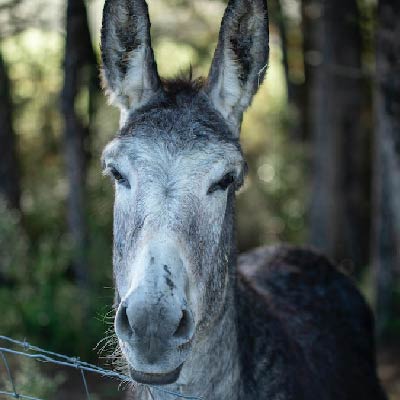
Andalusian donkeys are also known as Asno Cordobes and Asno de Lucena, after the city Cordoba and town Lucena in Andalusia, which allegedly claims its place of origin. They were commonly known as domestic donkeys in Andalusia, mostly used as work and drought animals. Their remarkable adapting capabilities to hot and arid climates made them the perfect animals for that area. They are also disease and heat-resistant and full of energy. All these factors made them a good choice for mule breeding.
Andalusian donkeys are generally calm and docile animals with strong and sturdy builds. They have a short and fine coat that is soft to the touch and pale grey and almost white in color.
3. Mallorquina
Mallorquin or Balearic donkeys are a breed of Spanish donkeys originally seen on the Island of Mallorca. With time, it expanded to almost all other groups of the Balearic Islands, giving them the name. They share common origins with the Catalan and Poitou breeds of donkeys and are structurally similar to the Catalan Donkeys. The difference between them is that the Balearic donkeys are shorter in height and have finer bones than the Catalan donkeys.

In the past, they were the most valued animals in Mallorca and were used in all kinds of agricultural work. The mares were used for reproduction and draught, while the stallions were kept specially for mule breeding. The Balearic donkeys also did works like carrying sacks of olives, and other loads, as draught animals and pulling carts. They were also used as a means of transportation for the breeders over long distances. They generally weigh around 360kg (793.6 lbs) and adorn a coat that is dark grape to black in color. This breed is also under threat of extinction according to surveys and studies. Activities for their protection and conservation are ongoing, and their perfect adaptation to rural zones benefits them in the process.
4. Encartaciones
Encartaciones are a breed of donkeys that are seen in the northwestern part of Spain. They are mostly draught animals in the villages that had great roles in traditional basque agriculture and pasturing. They are a critically endangered breed and are under conservation.
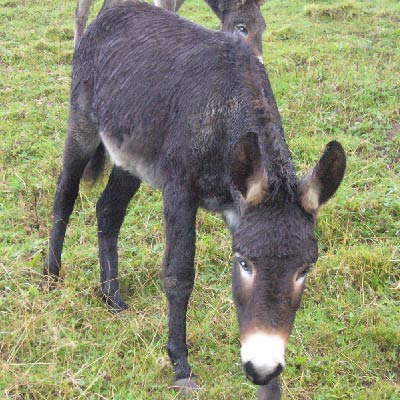
Encartaciones were mostly used for farm works on farms on the Cantabrian coast where they undertook the activity of moving the herds from summer pastures to winter pastures and vice versa. They were also used to transport milk by the shepherds down to the villages. These donkeys come in black, grey, white, or chestnut color. They have great agility but are docile by nature and small but well-proportioned and balanced in size. They also have an upright posture.
Industrialization and mechanization have had a toll on these donkeys, taking them off their jobs. And this is a reason for them to become virtually extinct. They are used for light agricultural work and to carry light loads like firewood to the villages these days.
5. Zamorano-Leonesa
This breed of donkey is said to have been in existence since the 10th century, making it one of the oldest types of donkeys in Spain. They were originally bred in the Cantabrian mountain ranges, and widespread exports of them in the 13th century, followed by the same in the 18th century, took the Zamorano-Leonesa breed of donkeys to different parts of the world. And hence, they became the first Spanish donkey to contribute to the evolution of the North American donkey. They have also had a significant influence on the development of the Poitou breed of donkeys, native to France.
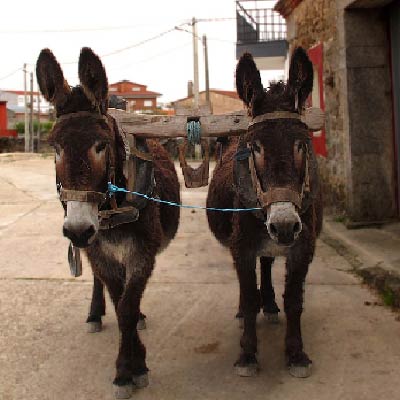
Zamorano-Leonesa derives its name from two provinces from where they hailed, Zamora and Leon. These large domestic donkeys were widely used in the past, for mule breeding, and to produce large mules for agricultural work. They are also used for tourism, trekking, and leisure. Weighing about 370 kg (815.71 lbs), these donkeys have powerful bodies and balanced conformation. Their rough, long, and shabby coats distinguish them, which are black or dark bay in color. The large head with their forehead spotting a mass of hair is also a characteristic feature of them. These days, they are to be found in the northwestern parts of Spain.
The Zamorano-Leonesa is a donkey breed that is also endangered as their demands decreased tremendously with machines replacing the work they did before. Still, worldwide measures for their conservation are in place, trying to revive their numbers.
6. Burro Farineiro
The Burro Farineiro breed of donkeys is the smallest among the domestic donkeys found in mainland of Spain. They are indigenous to the community of Galicia in the northwest part of Spain and are also called Asno Gallego. In the past, they were used mainly as pack animals for carrying sacks of flour from place to place, and “flour” in Galician translates to “farina”; hence, their name. These beasts of burden were also used to carry other loads such as grapes from the vineyard during the harvest season, and seaweed from the coasts to be used as fertilizers.
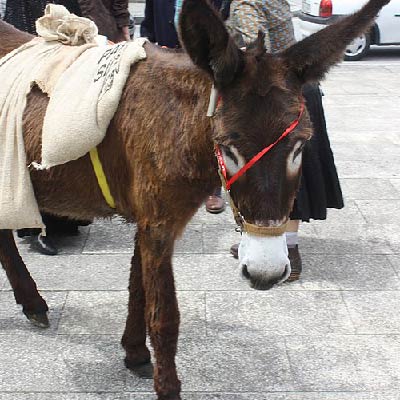
This breed has severely reduced numbers, the main reason being the jacks unable to produce offspring as many of them have already passed their age for reproduction. The burro Feraneiro weighs about 120-180 kg (264.55 – 396.83 lbs) and adorns a fine, dense, and smooth coat that is grey or pale brown in color.
7. Burro Majorero
Burro Majorero is a breed of small donkeys whose ancestors are originally from the northwest parts of Africa. They are small domestic donkeys indigenous to the Canary Islands and are the only equine breed of the archipelagos. They are small in size and weigh about 100 to 150 kg (220.46 – 330.69 lbs). This African-type donkey has a high heat resistance and adapts well to places with low rainfall. They are specially adapted to the volcanic environment of the Canaries, making them indigenous to the area.
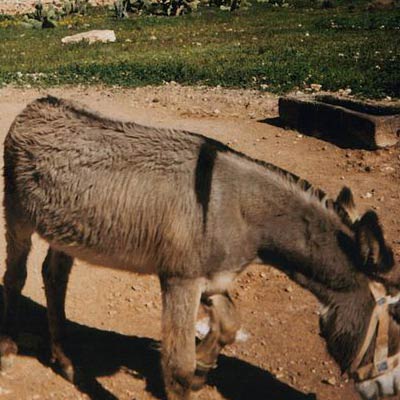
Burro Majorero adorns a dark or light grey coat and is under threat of extinction. Their numbers are steadily on the decline. In the olden days, they were used mostly by the islanders for riding and other agricultural activities. Now, they are used in the tourist business, with technologies replacing the labor once done by the donkeys.
Conclusion
If you’ve read until here, you have learned about the seven major breeds of donkeys in Spain. Did you know that there were this many varieties, that too just in Spain? Donkeys have been in use in the past for transportation and farm work. But modernization and the world moving at a pace faster than the donkeys have led them to their downfall. Though there are measures and activities for their conservation, the results aren’t guaranteed. So, love your donkeys and try to protect them from vanishing from the face of the earth.
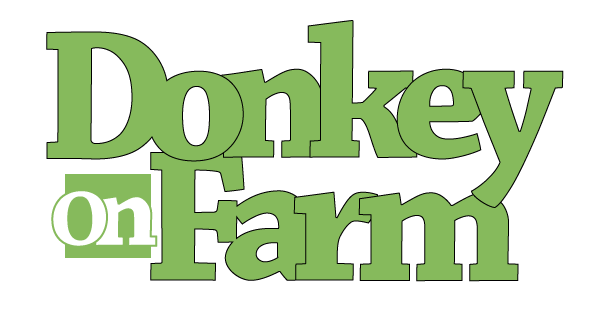
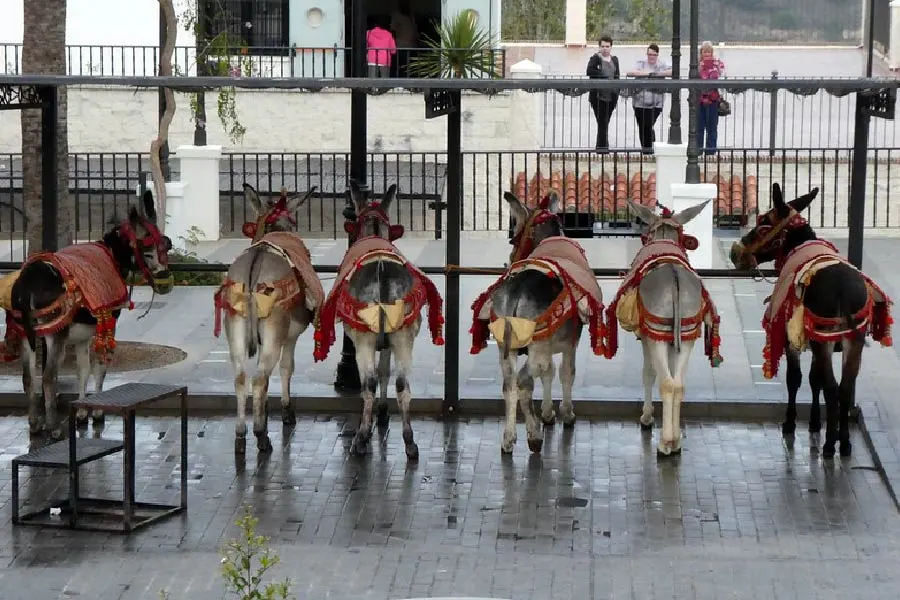

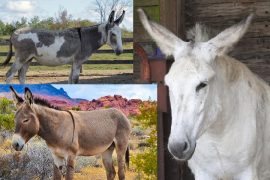
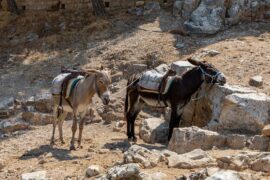
![What Are Mules Used For? [How Are They Better?] what are mules used for](https://donkeyonfarm.com/wp-content/uploads/2023/08/preview16_11zon-270x180.jpg)
![What are the Differences Between a Mule and a Hinny? [Which is Better?] difference between a mule and a hinny](https://donkeyonfarm.com/wp-content/uploads/2023/08/difference-between-a-mule-and-a-hinny-270x180.jpg)